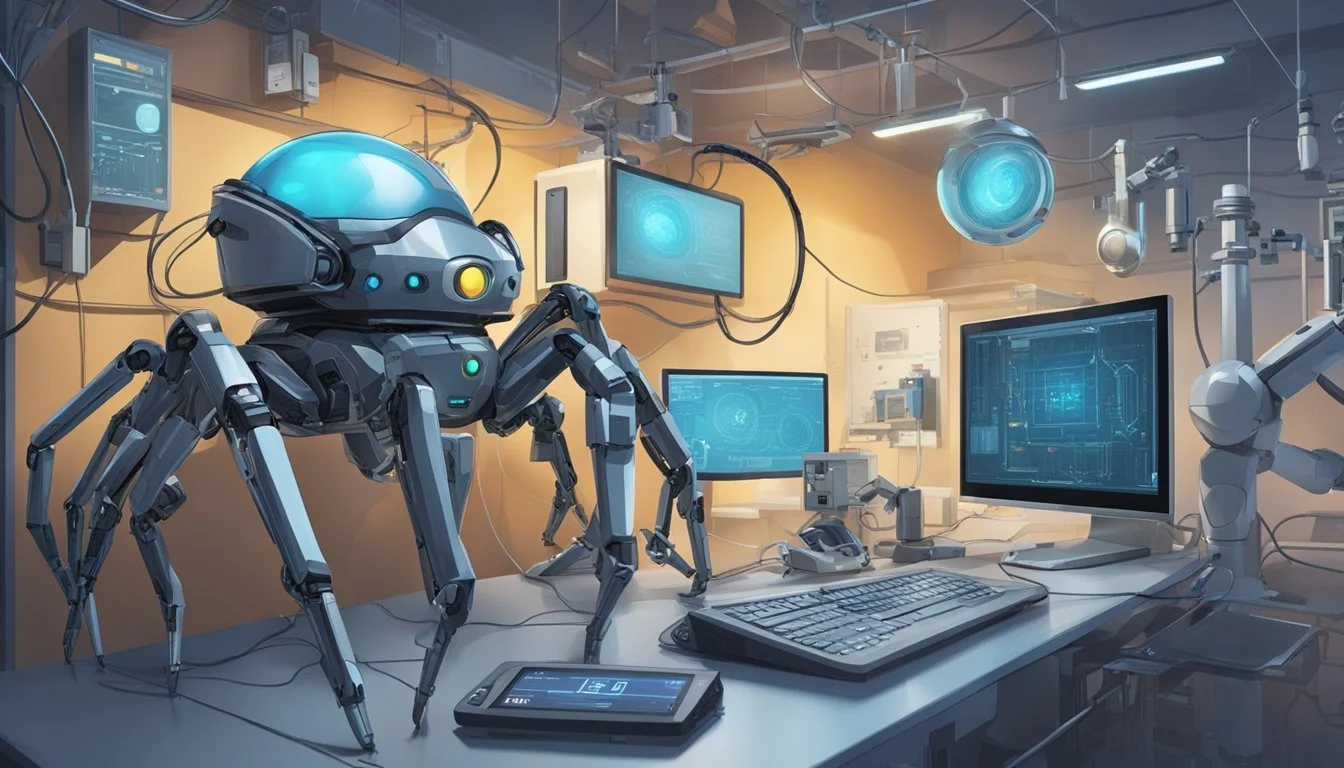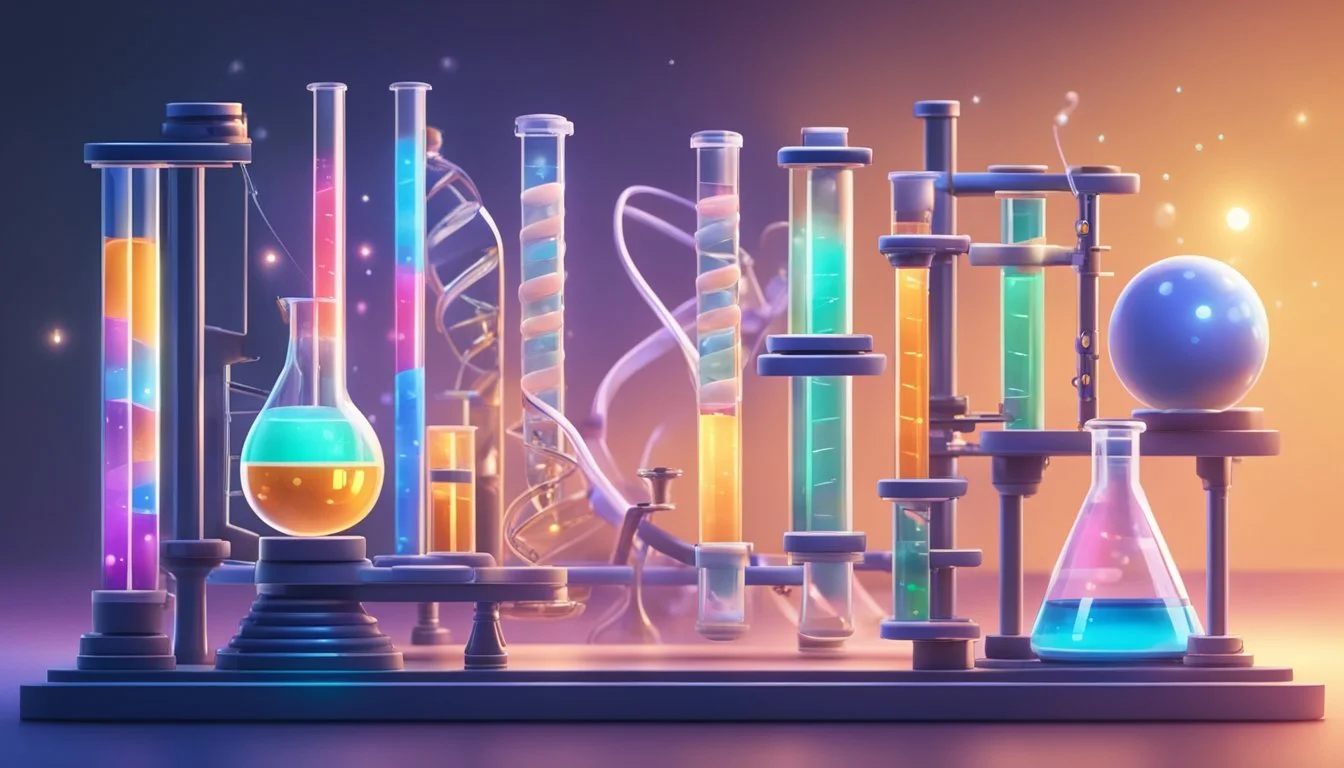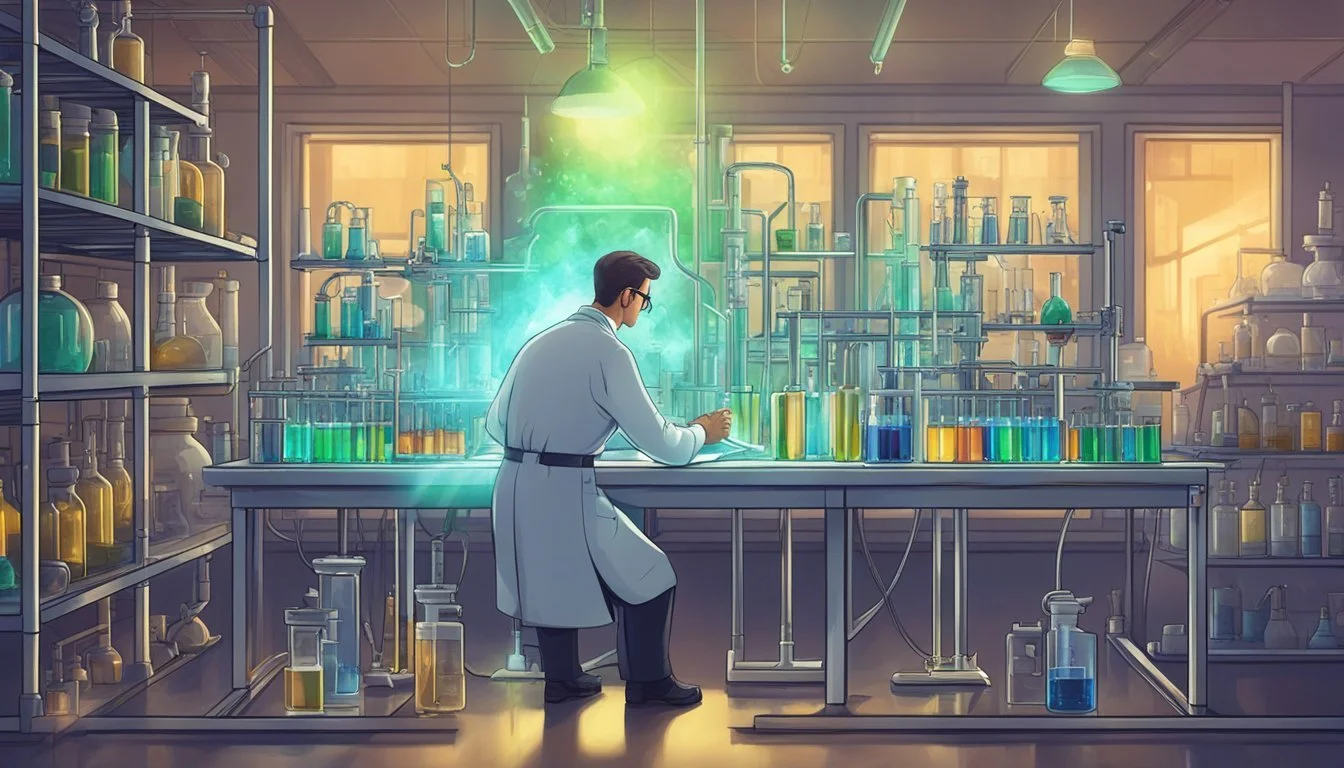7 Documentaries That Reveal the Science of Superhero Powers
Exploring Real-World Possibilities
Superhero powers have captivated audiences for decades, inspiring wonder and curiosity about their scientific plausibility. From invisibility to super strength, these extraordinary abilities often seem to defy the laws of nature. Yet, modern science continues to push the boundaries of what's possible, inching closer to unlocking some of these fantastical capabilities.
Documentaries exploring the science behind superhero powers offer fascinating insights into cutting-edge research and technological advancements. These films bridge the gap between fiction and reality, examining how real-world scientific principles might explain or even recreate superhuman abilities. By delving into fields like quantum physics, biology, and engineering, they reveal the potential for bringing comic book fantasies to life.
1) 'The Science of Superman' - Hosted by Neil deGrasse Tyson
'The Science of Superman' explores the scientific principles behind the Man of Steel's extraordinary abilities. Renowned astrophysicist Neil deGrasse Tyson guides viewers through this fascinating documentary.
The film examines Superman's powers from a scientific perspective. It investigates the plausibility of super strength, flight, and x-ray vision using real-world physics and biology.
Tyson brings his expertise to the subject, explaining complex concepts in an accessible manner. He draws connections between Superman's abilities and cutting-edge scientific research.
The documentary features interviews with comic book experts and scientists. It uses scenes from Superman comics and movies to illustrate key points about the hero's powers.
'The Science of Superman' offers a unique blend of pop culture and scientific inquiry. It challenges viewers to think critically about the limits of human potential and the laws of nature.
[https://www.imdb.com/title/tt0840034/]
2) 'Building Iron Man' - National Geographic
'Building Iron Man' explores the real-world potential of creating Iron Man's iconic suit. This National Geographic documentary follows Adam Savage's ambitious project to construct a functional Iron Man armor.
Savage collaborates with experts in 3D printing and flight technology to bring Tony Stark's creation to life. The team uses cutting-edge titanium 3D printing techniques to fabricate the suit's components.
The documentary showcases the challenges of designing a wearable, flying suit. It highlights the integration of jet engines and control systems to achieve limited flight capabilities.
Viewers get an inside look at the engineering process, from initial designs to test flights. The film demonstrates how modern technology is inching closer to realizing superhero-level innovations.
'Building Iron Man' offers a fascinating blend of science fiction and real-world engineering. It illustrates the intersection of popular culture and technological advancement in the pursuit of superhuman abilities.
https://www.imdb.com/title/tt10442926/
3) 'Stan Lee's Superhumans' - History Channel
'Stan Lee's Superhumans' aired on the History Channel from 2010 to 2014. The documentary series was hosted by Marvel Comics legend Stan Lee and contortionist Daniel Browning Smith.
Each episode explored extraordinary human abilities, seeking real-life individuals with seemingly superhuman traits. The show traveled the globe, documenting people with remarkable physical or mental capabilities.
Subjects included individuals with enhanced strength, speed, endurance, or unique sensory perceptions. The series aimed to uncover the science behind these exceptional human feats.
Experts and scientists often provided insights into the biological or psychological mechanisms underlying the featured abilities. This approach offered viewers a blend of entertainment and scientific exploration.
'Stan Lee's Superhumans' showcased the diversity of human potential, highlighting how some individuals push the boundaries of what's considered physically or mentally possible.
https://en.wikipedia.org/wiki/Stan_Lee%27s_Superhumans
4) 'Spider-Man Tech' - Discovery Channel
'Spider-Man Tech' explores the scientific principles behind Spider-Man's abilities. Released in 2007, this documentary examines how Peter Parker's powers might work in reality.
The film analyzes Spider-Man's web-shooting, wall-crawling, and superhuman strength from a scientific perspective. It features interviews with comic book creators, filmmakers, and scientists who provide insights into the character's abilities.
'Spider-Man Tech' compares the fictional hero's capabilities to those found in nature. It investigates how spiders' unique adaptations could potentially translate to human-scale powers.
The documentary also looks at real-world technologies that could replicate some of Spider-Man's abilities. It discusses advancements in materials science and biomechanics that might one day lead to similar superhuman feats.
By grounding fantastical concepts in scientific principles, 'Spider-Man Tech' offers viewers a deeper understanding of the beloved superhero's powers.
5) 'Batman Tech' - Hosted by Kevin Conroy
'Batman Tech' explores the cutting-edge gadgets and technology used by the Caped Crusader. Hosted by Kevin Conroy, the iconic voice of Batman in animated series, this documentary delves into the science behind Batman's arsenal.
The film examines how Batman's fictional tools compare to real-world counterparts. It showcases the Batmobile, grappling hooks, and state-of-the-art body armor, relating them to actual military and law enforcement technologies.
Experts in various scientific fields provide insights into the plausibility of Batman's gear. They discuss topics like materials science, engineering, and forensics to explain how close reality comes to the comic book world.
'Batman Tech' offers fans a unique look at the intersection of science fiction and fact. It demonstrates how Batman's gadgets, while often exaggerated, are often inspired by real technological advancements.
https://www.imdb.com/title/tt1265588/
6) 'X-Men: Spinning Science' - Exploring Genetics
'X-Men: Spinning Science' delves into the genetic foundations of mutant powers in the X-Men universe. The documentary examines the fictional X-gene, responsible for superhuman abilities in mutants.
It explores how the X-gene concept parallels real genetic variations that can lead to unique traits in humans. The film discusses the scientific principles behind mutations and their potential effects on an organism's characteristics.
Experts in genetics and evolutionary biology provide insights on how the X-Men's powers might manifest in reality. They compare the rapid evolution depicted in the comics to actual evolutionary processes.
The documentary also addresses the ethical implications of genetic manipulation and enhancement. It draws parallels between the treatment of mutants in the X-Men world and real-world discrimination based on genetic differences.
'X-Men: Spinning Science' offers viewers a blend of entertainment and education, using the popular franchise to spark interest in genetic science.
https://en.wikipedia.org/wiki/X-Men
7) 'Hulk vs. Wolverine' - The Power of Regeneration
'Hulk vs. Wolverine' explores the scientific possibilities behind superhuman healing abilities. The documentary examines the regenerative powers of these iconic Marvel characters.
Wolverine's healing factor is analyzed, showing how his body rapidly repairs wounds and resists toxins. The film discusses potential genetic modifications that could enhance cellular regeneration in humans.
The Hulk's incredible healing is also scrutinized. Scientists explain how his ability to regrow tissue and organs could work on a molecular level. They explore the energy requirements for such rapid healing.
The documentary compares these fictional abilities to real-world examples of regeneration in nature, such as lizards regrowing tails. It speculates on future medical applications of enhanced healing.
Experts debate the limits of regeneration and its impact on aging and longevity. The film considers the ethical implications of developing such technology for human use.
https://www.imdb.com/title/tt1712210/
The Physics Behind Superpowers
Superhero powers often push the boundaries of physics, yet many can be explained through scientific principles. Real-world physics provides insights into how superpowers might function if they existed.
Applying Newtonian Laws
Newton's laws of motion help explain many superhero abilities. Superman's flight defies gravity, but his acceleration and deceleration align with Newton's first law of inertia. The force required for Spider-Man to swing between buildings can be calculated using Newton's second law, F = ma.
When superheroes throw objects or land powerful punches, Newton's third law comes into play. For every action, there's an equal and opposite reaction. This explains why characters like the Hulk can cause massive destruction with their strength.
Energy Conservation in Superhuman Feats
Energy conservation is crucial in understanding superhero powers. The Flash's super-speed would require an enormous amount of energy. This raises questions about his metabolism and heat dissipation.
Iron Man's suit presents an interesting case study in energy efficiency. The power source for his flight, weapons, and life support systems would need to be incredibly compact yet potent.
Telekinesis, as seen in characters like Jean Grey, poses challenges to energy conservation. Moving objects with the mind would require converting mental energy into kinetic energy, a process not explained by current physics.
Genetic Mutations and Superhuman Abilities
Genetic mutations can lead to extraordinary abilities in humans, sometimes resembling superhero powers. These rare genetic variations alter physical and mental capabilities in ways that push the boundaries of human potential.
Understanding Gene Editing
Gene editing involves modifying an organism's DNA to change specific traits. Scientists use techniques like CRISPR to target and alter genes with precision. This technology allows researchers to study the effects of genetic mutations on human abilities.
Gene editing has revealed mutations that enhance strength, speed, and endurance. For example, a mutation in the MSTN gene can result in increased muscle mass and reduced body fat. Another mutation in the LRP5 gene leads to denser, stronger bones.
Some genetic variations improve cognitive functions. A mutation in the NRXN1 gene is linked to enhanced memory and learning abilities. Researchers are exploring how these findings could lead to treatments for neurological disorders.
The Role of CRISPR Technology
CRISPR (Clustered Regularly Interspaced Short Palindromic Repeats) has revolutionized genetic research. This tool allows scientists to edit genes with unprecedented accuracy and efficiency. CRISPR has opened new avenues for studying superhuman traits.
Scientists use CRISPR to investigate genes associated with extraordinary abilities. They can create cell lines or animal models with specific mutations to observe their effects. This research helps uncover the genetic basis of traits like enhanced vision, pain resistance, and accelerated healing.
CRISPR also holds potential for treating genetic disorders. By correcting harmful mutations, it may prevent or cure diseases. This technology raises ethical questions about enhancing human abilities beyond natural limits.
Psychological Aspects of Superhero Personas
Superhero stories tap into fundamental psychological themes that resonate with audiences. The origin stories of many superheroes often involve trauma or life-altering events. This reflects how adversity can shape identity and motivations.
The dual identities of superheroes mirror the different roles people play in their own lives. The contrast between a hero's public and private personas explores concepts of authenticity and social masks.
Superheroes frequently embody idealized traits like courage, selflessness, and unwavering morality. This allows readers to project their aspirations onto these larger-than-life characters.
The struggles superheroes face with their powers can symbolize internal conflicts many people experience. Issues of responsibility, self-control, and the burden of exceptional abilities parallel real-world challenges.
Villains in superhero narratives often represent exaggerated personality disorders or moral failings. Characters like the narcissistic Riddler or the psychopathic Joker personify human flaws taken to extremes.
Superhero teams showcase group dynamics and diverse personalities working together. This reflects workplace and social situations where people must collaborate despite differences.
The enduring popularity of superhero stories suggests they fulfill important psychological needs. They offer hope, moral guidance, and cathartic outlets for processing complex emotions and societal issues.






